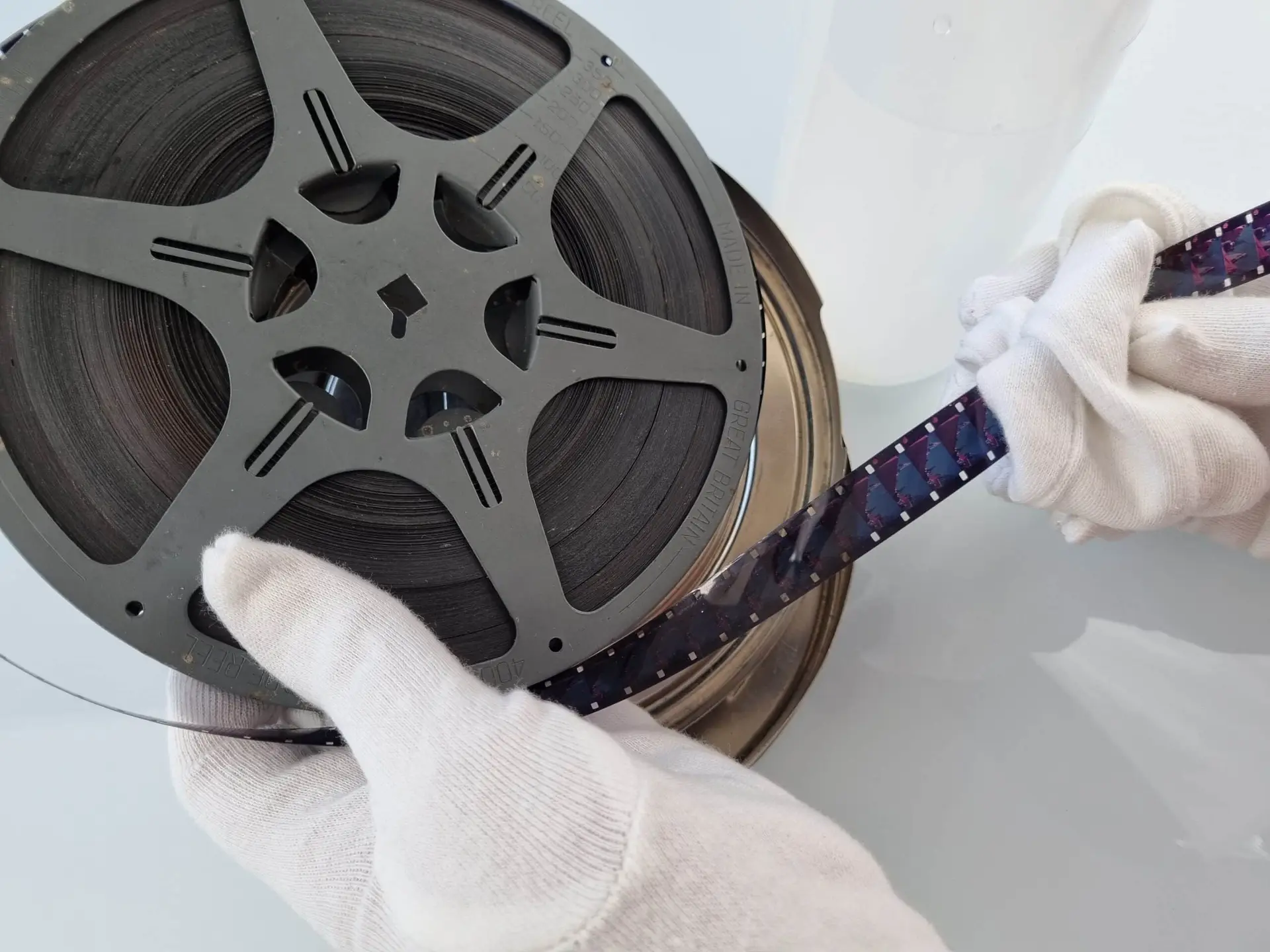


Film Developing – What type of film do I have? Home movies capture precious moments that we cherish and want to preserve. Over the years, you may have accumulated boxes filled with old film that you have forgotten about. Maybe you inherited a chest full of home movies from family members, and you are unsure about what kind of film is in the box. With the advancement of technology, it’s likely that you no longer have the equipment to view them. Fortunately, identifying what kind of film you have is easy, and this article will guide you through the process.
The first step in identifying ‘what kind of film do i have? you have is to determine whether the film is loose or in a cassette. In the past, film was sold in long strands of celluloid. However, as technology progressed, film companies started to put the film into non-removable cases for protection.
For film developing, it is important to identify whether you have loose or cased film, check whether your film has any protective casing around it. If the film is not in a cassette, proceed to Step 2. If the film is inside a cassette, proceed to Step 3.
When it comes to film developing it is important to know what width your tape is, here are a few suggestions:
Film companies have released a variety of film sizes and types over the years. Most loose film formats are named according to their width. To determine the width of your film, use a tape measure with metric markings. If your film is loose, it is likely one of the following sizes:
8mm Film – 8 millimetre film is the skinniest of the film formats. It’s also known as standard 8 film. Although this film format is old, it still exists. You can easily identify it by checking whether the film only has perforations (little holes) on one side. Then there’s Super 8 film which is the same width but the picture area is bigger. If you’re searching for a company to convert super 8 to digital, be sure that do justice to your format and that they have the right equipment – as Supaphoto will. Remember too that you mustn’t assume that your old 8mm cine film has been chemically processed. If it hasn’t – then you’ll need to go through this process.
9.5mm – 9.5mm Cine Film. The width of 9.5 mm was essentially chosen because three strips of film could be made from one strip of unperforated 28 mm film. This was very useful when duplicating films, because only one strip of 28 mm had to be processed. When it was discontinued in 1927, 9.5 mm strips were cut from 35 mm film
16mm – 16 millimetre film is double the width of 8mm. It was more widely used than 8mm because the picture size was clearer.
The main difference between 8mm and 16mm film is that 16mm film has two sides of perforations.
35mm – 35mm film was commonly used in professional video recording. Although it is unlikely, it is possible that your films are 35mm. To determine the width of your film, measure it.
Remember too that the film may be spliced together. If it is – make sure they are the same gauge.
If your film is in a cassette, congratulations! You have a protective case for your film, this also makes it easier for film developing. Over the years, film cassettes have come in various sizes. Here’s what your cassettes could be:
Super 8 – Super8 is the oldest cassette type format. It looks like a little box with rounded edges on one side. The film is 8mm wide, so it’s the thinnest film of all cassette formats.
VHS – VHS is a widely known cassette format. One tricky thing to note is that there’s a format called Compact VHS, which was a smaller cassette that would go inside a larger cassette and play back in a VCR.
Betamax – Betamax is about half the size of VHS. Instead of two reels like VHS, it only has one.
Hi8 / Digital 8 / Video 8 – All three of these formats have the same cassette size and film. The difference is the way that the film is recorded. Although looking at the cassette won’t help you too much, the label might say what it is.
Mini DV – MiniDV cassettes are the smallest of the bunch. They’re about a quarter of the size of a
VHS tape. They have super small film, and they encode video digitally when filming.
Identifying your film format is as simple as measuring it.
Although there are other film formats out there, it’s unlikely that you would have them since they are probably professional types used in broadcasting.
If you’re unsure what you have – you’ve come to the right place – you’ll find plenty of resources to help you here or feel free to contact us on 0800 690 6160 or click here , where we’ll quickly be able to help you.